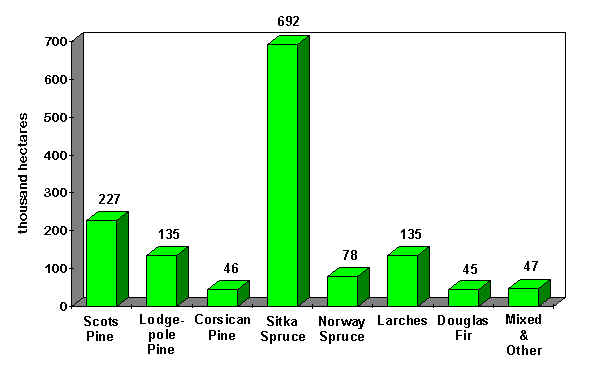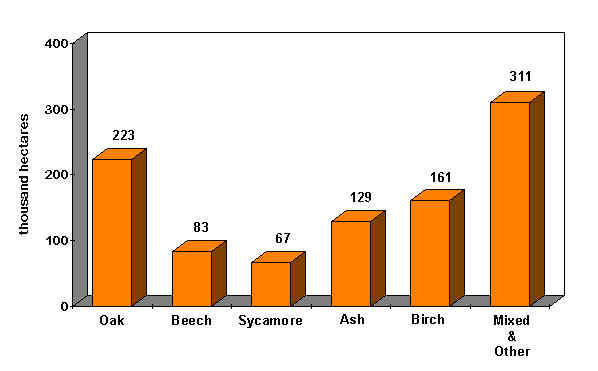Main Forest Species in Britain
| The charts below illustrate the main species of conifers and broadleaf trees making up the forests of Britain and their relative importance in terms of area. The figures are for the year 1999 and were obtained from Forestry Commission statistics published in UK Indicators of Sustainable Forestry . It must be noted that these figures incorporate historical planting trends and do not necessarily reflect modern day planting priorities. |
CONIFERS |
|
Of the total planted area of conifers shown in the chart above, 76% occurs in Scotland, with the remaining 24% divided fairly equally between England and Wales. The chart shows that Sitka Spruce is by far the most frequently planted conifer. The only native species of conifer of any importance in forestry is Scots Pine. This tends to be planted most widely in areas of Scotland (62% of the charted area for Scots Pine). In this region of Britain, it is hardier than imported species and better adapted to the local environmental conditions. The bulk of Scots Pine planting is in the Caledonian Forest where there is a programme to recreate the original forest, using trees of local provenance. |
|
| In contrast to the conifer species, the majority of which have been introduced, most of the common broadleaf trees are native to Britain. Sycamore is the only non-native species occurring over enough area to be included in the statistical breakdown. Oak accounts for the greatest area of unmixed broadleaf woodland. |
Use your back button to return to the previous page

